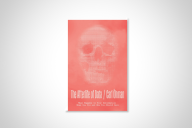You have /5 articles left.
Sign up for a free account or log in.
That strands of Napoleon's hair might reveal he was murdered (rather than dying of stomach cancer, as thought at the time) remains probably the best-known case of "retrospective diagnosis" of the kind practiced by Philippe Charlier and engagingly explained to the lay public in his When Science Sheds Light on History: Forensic Science and Anthropology (University Press of Florida), written with David Alliot. In the early 1960s, researchers identified a significant concentration of arsenic in the deposed emperor's remains. A long debate over the possibility of foul play then ensued.
It's the nature of such speculations never to go away entirely, but the scholarship in recent years leans toward less sinister possibilities. The lack of symptoms of arsenic poisoning in the medical record of Napoleon's final days makes it likely that he -- or, posthumously, his hair -- absorbed the toxin from the environment over time rather than in fatal doses delivered by an assassin. One hypothesis is that he may have taken arsenic to boost his libido.
(Ten years ago, a book appeared called Is Arsenic an Aphrodisiac? The Sociochemistry of an Element. A reviewer for the Journal of the History of Medicine and Allied Sciences complained that the author, after for the most part avoiding the issue, "notes in his closing words that he leaves 'it to the reader to answer the question posed in the title of this book.'" But not through experiment, one hopes.)
The case of the toxic locks involved a much less sophisticated form of inquiry than that practiced by Charlier, who heads the section of medical and forensic anthropology at the University of Versailles Saint-Quentin-en-Yvelines. His book, published in France in 2015 and now out in translation, collects 41 short studies of forensic analysis conducted on human remains from the dawn of our species through the late 19th century. A few chapters read as if they might have originally been composed as notes for professional journals, but most carry enough historical context and sense of implication to count as brief essays.
Charlier prefers the word "patients" when characterizing "these individuals who have come to us from the past." With any set of human remains, one obvious line of questioning concerns when and how the patient died -- and sometimes (as any viewer of forensic procedurals on TV will know) how the body got to where it was found. And a number of Charlier's reports concern what turns out to be evidence of wrongdoing, discovered centuries or more after the fact. The most memorable, and perhaps the most appalling, concerns a pair of skeletons from the first or second century B.C. discovered on the island of Delos in the 1960s.
First of all, the bodies showed signs of a kind of torture and execution reserved for slaves, prostitutes and others at the bottom of the social hierarchy: "The process consisted of laying the victim horizontally on a plank and nailing down their wrists and feet. Thus exposed, the victim died slowly of dehydration, sunstroke, respiratory failure … or even being eaten alive by roaming animals." In examining the remains, Charlier determined that the original assessment of the patients' sex was wrong; the pelvic girdles showed them to be two women under 45 years of age, one of whom "had worn leg irons around the knees for a long time, causing an inflammatory reaction of the bone in contact with them."
Following death, the bodies were dumped into a cesspit. Even more than the mode of execution, this "marked [them] by the stamp of infamy -- all the more so since the latrines continued to function after their death."
A grim story, but also a mystery. In 426 B.C., graves on Delos were exhumed and the bodies transported elsewhere so that the island could be purified as a sanctuary to Apollo, "not to be soiled by either blood or death, otherwise disaster would befall [Athens]." The two women's deaths and disposal were, in all respects, an abomination.
The bones themselves do not tell every story. "It is possible, using a microscope, to identify food debris, even several centuries after the death of the patient," writes Charlier, since "we can find fragments of cereals, pollen, animal hairs, plants, parasites, [and] even small insects that, trapped in the saliva, found themselves caught in irregularities of the teeth and were then covered with tartar."
At the other end of the gastrointestinal tract, we have "a small, hard, crystalline object," about one inch long, "completely calcified, in the shape of a bean" and located "at the level of the bladder" in the skeleton of a 6-year-old girl who lived in Rome in the second century A.D. The resulting infection may not have killed her, but the worst-case treatment recommended by the ancient medical authority Galen could have: "He suggested taking the child by the feet and shaking it, with the head down, in hope that the calculus would fall …"
Charlier has a special interest in the rituals and traditions related to disease and death. In the case of French royalty, treatment of the king's body following death began with an autopsy conducted "in public under the scrutiny of the deceased's closest servants but to the exclusion of the royal family," leading to "the separation of the cadaver: one grave for the body, another for the heart and a third for the entrails (viscera)." Besides the lab work that can be now conducted on the remains -- including examination of the genetic material -- Charlier also studies the autopsy reports, which are remarkably detailed.
But I am feeling a little green at this point, and will spare you. Nor will we pause to consider -- at least in any detail -- the pessoï, "those little pieces of coarsely retouched pottery destined to wipe one's backside after defecation, which were used all around the Mediterranean under Roman domination." They also served as a way to vent: "Some had names engraved on them so that you wiped your backside with a pessoï bearing the name of your enemy."
It's just one of many details in the book through which Charlier's study of the dead illuminates the world of the living. At very least, the pessoï are a reminder of one way people vented malice before the invention of the comments section.








